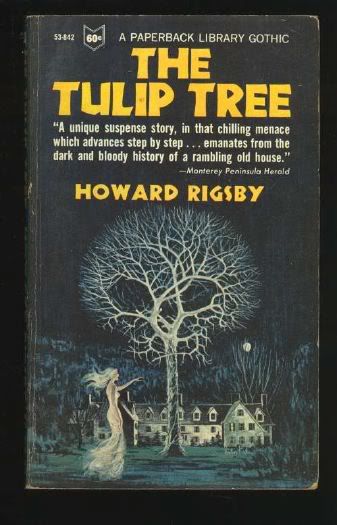 Correct cover art, different title and author. This book's title is in bold white letters at upper left-hand corner. The true color is a sinister bile green with mossy hightlights. In the lower right-hand corner are these words in white italics: "Beneath the lovely facade of a modern young wife lurked an evil -- as ancient and indestructible as time."
Correct cover art, different title and author. This book's title is in bold white letters at upper left-hand corner. The true color is a sinister bile green with mossy hightlights. In the lower right-hand corner are these words in white italics: "Beneath the lovely facade of a modern young wife lurked an evil -- as ancient and indestructible as time."The story purports to be true. Its author, Margery Lawrence, begins in the Foreword: "Most readers of this book will regard it as a piece of pure fantasy, but in fact it is not. It is the true and exact account (except in a few places where I have altered the 'coloring' of the story in order to avoid any possible identification with places or people) of the marriage of a friend whom I will call, for obvious reasons, Mr. X. Mr. X is a scientist of considerable attainments..."
Blah blah. The story opens on Keith Randolph, 27-ish Englishman. The story is told from his perspective. While on business in Italy on his father's behalf, Keith meets Gilda: A gorgeous red-headed sculptor, and a widow, who works in her father's home. Her father is a wealthy collector and antiquarian. Keith is madly attracted to Gilda; she's smooth and coy. Soon they're married and burning up the marriage bed. She'd always wanted an English husband, and soon they settle in London. Things go fine for a while; Gilda has a few oddities about her, including refusal to take any salt in her food. She's also always offering to "do" other peoples' hair and nails; claims to have been a former stylist and manicurist. Keith's father, wealthy in his own right, becomes progressively ill. Keith finds little envelopes filled with hair clippings and nail trimmings of various people (their names are written on each envelope in Gilda's hand) in a mysterious box in her work desk. Hmmmm! Soon Gilda becomes pregnant; and she's FURIOUS about it. The baby (Noel) is born and Gilda shows no care for her child; let the nanny do everything. She's cold, callus, super-selfish; Keith becomes increasingly frustrated and enraged by Gilda's "turn" of character.
But a bright spot in Keith's life: Chloris. She's the daughter of his father's long-time Grecian friend (or something). Chloris and her Aunt Mary relocate to London as well; Chloris begins working for a magazine. They've known each other for ages and Keith gradually begins to fall in love with Chloris. Aunt Mary's lady servant recognizes Gilda for what she is: A witch! Despite the shocked utterance accompanied by fainting on the woman's part, despite all evidence he's seen/experienced, Keith is "shocked" and must run to a dictionary to ensure he understood the Greek word the woman used against his wife. Right.
As the Randolphs' marriage continues to sour and the health of their son, Noel, continues to falter, Gilda is suddenly summoned to Italy: Her father. Who soon dies. Seems lots of people die around Gilda at the most opportune times. Meanwhile, Keith nobly plans how to save his faltering infant son, Noel, from his mother; she's away in Italy and he has time...which he fritters away wringing his hands when he's not taking Chloris out for drinks and dancing. >:-( It's very easy to see the social mores/values of the time in these old novels: An angry witch will carry a child to term rather than abort it; a man cannot divorce his wife and must stand idly by (sort of) until she returns home.
The story is chatty, chatty, chatty. Lots of descriptives of dress, hairstyles, jewelry. Painstaking detail about EVERYTHING. That was a major turnoff, and after page 108 I had enough and skimmed to the ending:
Which is happy of course. Gilda gets hers in the end. Noel is spared (thankfully!), Keith and Chloris are free to love and marry; they have 3 children.
I give it 3 stars out of 5. It's good writing and entertaining, just...tedious.

























